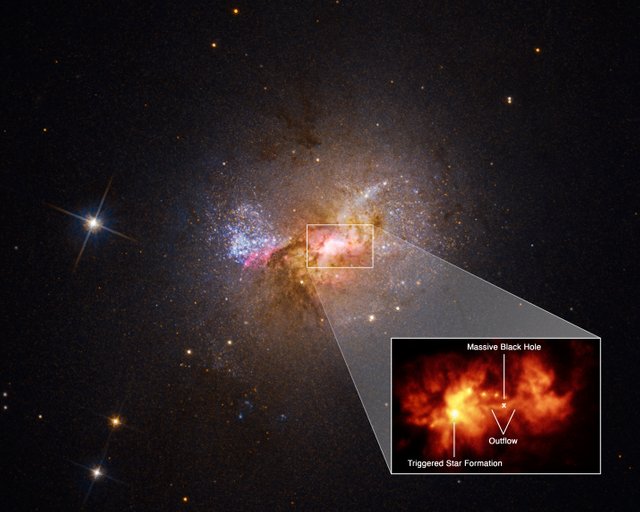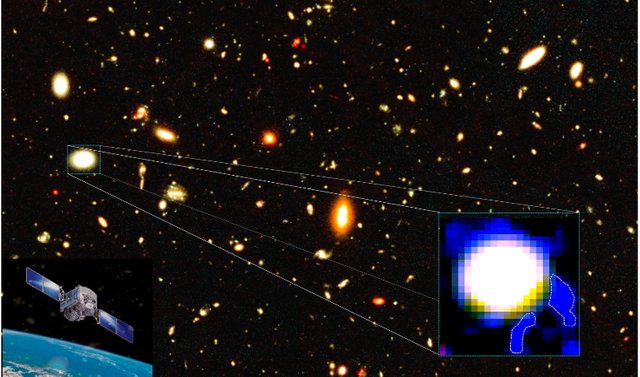
Delhi: Signals from the outskirts of a galaxy that isn't always extra than one hundred fifty million years suggest formation of more moderen stars with the aid of using the galaxies past their seen boundaries, in step with a latest have a look at. The studies strains how those younger stars, which can be discovered withinside the shape of big name-forming complexes or clumps, migrate closer to the internal areas and regularly building up the stellar content material of those galaxies.
Astrophysicists were exploring to find out how galaxies, the simple constructing blocks of our Universe, shape and evolve into present-day ones. But the image nevertheless stays incomplete.
The UltraViolet Imaging Telescope (UVIT) onboard AstroSat, India`s first committed multi-wavelength area observatory, has these days detected faint emission of Far UltraViolet (FUV) mild withinside the outskirts of a pattern of remote Blue Compact Dwarf (BCD) galaxies which can be approximately 1.5 – 3.nine billion mild-years away. These are small galaxies normally characterised with the aid of using their centrally focused big name formation.
The discovery, a joint final results of a have a look at with the aid of using an global crew of astronomers from India, the united states and France, is a great step closer to tracing the mysteries of galaxy formation. The have a look at posted withinside the magazine Nature become conceived with the aid of using Prof. Kanak Saha of Inter University Center for Astronomy and Astrophysics (IUCAA), Pune.
Anshuman Borgohain, the lead creator of the thing and a recipient of the INSPIRE Fellowship of the Department of Science and Technology (DST), stated that the incidence of such younger stars on the outer edge of galaxies is often a tell-story signature of latest fueloline accretion from their environment that gasoline the big name-formation and next galaxy growth. The researcher at Tezpur University labored below the joint supervision of Dr. Rupjyoti Gogoi, Assistant Professor of Physics at Tezpur University, and Prof. Kanak Saha, Professor of Astronomy at IUCAA.
“The resolving energy of UVIT and UV deep discipline imaging strategies has been the important thing to recognizing those very younger, massive big name-forming clumps. Due to their massive distances from us, it become a tough project to set up the detection of those faint, extraordinarily blue big name-forming clumps with million sun masses,” stated Prof. Kanak Saha, highlighting that it helped witnessing the live formation of those a long way-manner dwarf galaxies.

Dr. Bruce Elmegreen, a important studies group of workers withinside the IBM Research Division, USA, who contributed to the have a look at, stated, “It has been a thriller how a few small galaxies like those could have such lively big name formation. These observations advise that accreting fueloline withinside the a long way outer components may be compelled to transport inward via torques exerted with the aid of using large fueloline and stellar complexes. This migration builds up the imperative density over the galaxy`s lifetime.”
Coauthor Prof. Francoise Combes of Observatoire de Paris, France, Professor on the College de France, elaborated that the invention illustrates how rather the big name formation can continue in rather pristine low-metallicity fueloline. “The outer quantities of those gaseous disks are risky closer to fragmentation, despite the fact that those dwarfs should be ruled with the aid of using darkish matter, which might restrict the fragmentation,” she explained. Coauthor Prof. Shyam Tandon, ex-emeritus Professor at IUCAA and PI of UVIT, highlighted the significance of UVIT information on this have a look at.
Dr. Rupjyoti Gogoi, Assistant Professor of Physics at Tezpur University and companion at IUCAA, stated that the work, which makes use of information from India`s indigenous satellite, AstroSat, may be an idea to younger researchers of the country, even as Prof. Somak Raychaudhury, Director of IUCAA Pune, and Prof. Vinod K. Jain, the Vice Chancellor of Tezpur University underlined the blessings of such collaborative work.